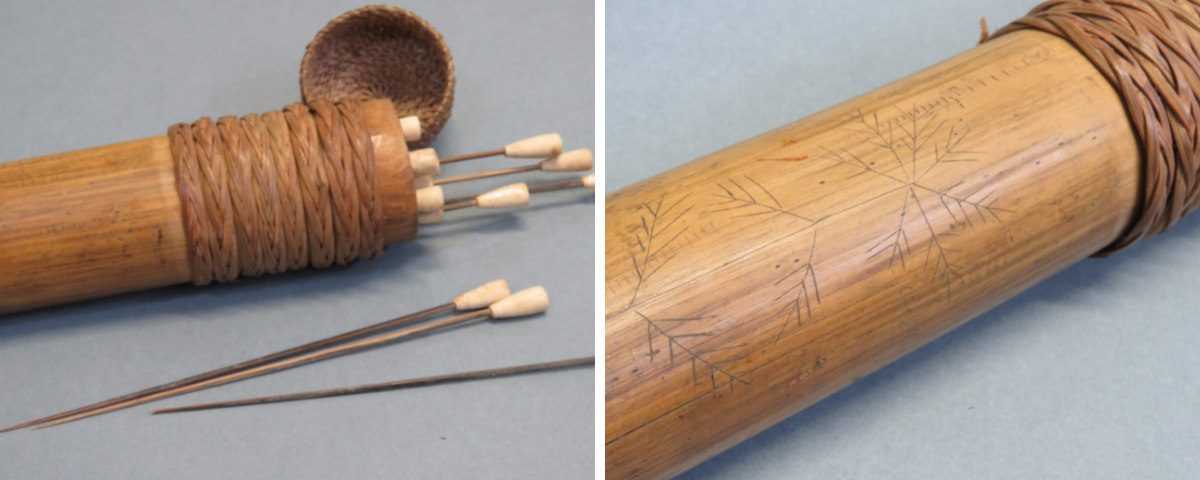Alison Sofield, Volunteer Collections
Many fascinating and obscure objects find their way to museums from around the world, often far from their country of origin. One such item from the Sarawak region of Borneo has found its place at the Whangārei Museum, a bamboo container with a number of blowgun darts inside it. It was donated by Mrs E.F. Radford, who with her husband, J.B.J. Radford lived for a time in Borneo in the 1930’s where Mr Radford worked as a surveyor for the Colonial Service, Lands and Survey Department. During their tenure, the Radfords collected and were gifted many interesting items which were eventually donated to the museum.
The blowgun was a standard weapon for the Penan people of Sarawak, Malaysia’s largest state. Many other cultures, especially in South East Asia and South America, used a version of this hunting weapon to kill squirrels, wild boar, deer and birds in the rainforest. These weapons are still in use today in remote regions. A blowgun, also called a blowpipe or blow tube is a simple weapon with a small tube for firing darts. The dart is placed inside the hollow tube before blowing hard through one end to fire the dart. The pointed end of the dart is often dipped in a toxic substance designed to paralyse the prey.
The darts were kept in a quiver style holder made from a section of giant bamboo, which was often decorated with carved patterns or symbols. The quiver pictured here has what appears to be a fish carved into it. These particular darts may have been used to catch fish.
There is a rattan binding at one end with a woven cap to stop the darts falling out. The darts themselves were made from thin slivers of sharpened bamboo with a lightweight stopper on one end. Traditionally blowpipes were made up to 1200 mm long, but shorter ones could be used for close range shooting. Guns and other weapons have tended to replace the blowgun and efforts are being made to preserve the craft in Malaysia. A carved example can today cost as much as a $1000 and take several months to make.
Historians believe the blowgun and pipes have been around since the stone age and were in common use among tribes throughout the world particularly in tropical regions.
The first recorded mention of blow pipes was found in the writings of the Italian explorer, Antonio Pigafetta, in 1521. He wrote about blowpipes with harpoon-like tips, some made of fishbone, often tipped with a poisonous herb.
Later explorers and ethnologists wondered why these tribesmen of Borneo had not progressed to the use of bows and arrows, surely more efficient than blowpipes. Author Peter Metcalf in the 1800’s discovered through studying the people of Sarawak, that the dense jungle and mountainous terrain were better suited to blowpipe weapons as it was hard to get a clear shot with a bow and arrow and once arrows were lost could not be easily retrieved. In fact, blowgun darts can travel at 400 feet per second, this is roughly twice the velocity of an arrow from a wooden bow.
Items, such as these examples from Borneo, widen our knowledge of the world around us and help us understand how other cultures function, then and now.
